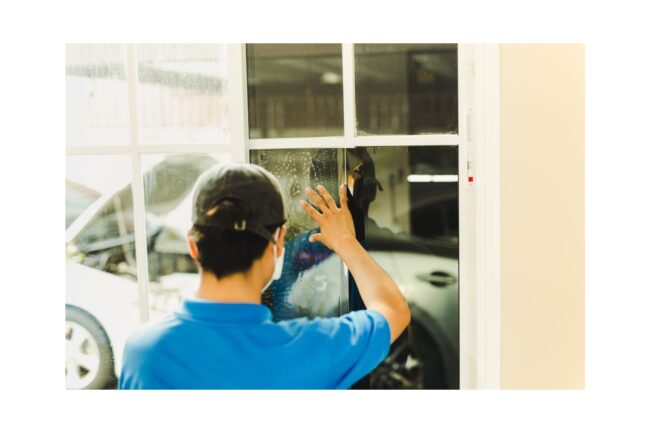In the realm of energy efficiency solutions, window tinting emerges as a cost-effective yet highly impactful option. As the world grapples with environmental concerns and rising energy costs, finding ways to conserve energy without breaking the bank has become imperative. Window tinting presents a straightforward and efficient method to address both concerns simultaneously.
This blog delves into the myriad benefits of window tinting, from its ability to regulate indoor temperatures to its capacity to reduce energy consumption. By applying a thin film to your windows, you not only enhance privacy and reduce glare but also significantly diminish the heat transfer through the glass. Consequently, your home or office space remains cooler in summer and warmer in winter, reducing reliance on heating and cooling systems.
Join us as we explore the science behind window tinting, debunk common misconceptions, and uncover how this simple yet powerful solution can revolutionize your approach to energy efficiency.
Financial Benefits of Window Tinting: Calculating Your Return on Investment
Investing in window tinting for your home or business isn’t just about improving aesthetics; it’s also a strategic decision that can yield significant financial benefits over time. In this post, we’ll explore how to calculate the return on investment (ROI) of window tinting for energy efficiency, helping you make informed decisions about this cost-effective solution.
 Understanding the Initial Investment: Before diving into the ROI calculations, it’s crucial to grasp the initial costs associated with window tinting. These costs typically include the price of the tinting material itself and any professional installation fees if you opt for professional services.
Understanding the Initial Investment: Before diving into the ROI calculations, it’s crucial to grasp the initial costs associated with window tinting. These costs typically include the price of the tinting material itself and any professional installation fees if you opt for professional services.
- Estimating Energy Savings: The primary financial benefit of window tinting comes from reduced energy consumption. By blocking out solar heat gain in the summer and retaining heat in the winter, tinted windows can decrease the workload on your HVAC system, resulting in lower energy bills. To estimate your potential energy savings, consider factors such as your location, climate, building orientation, and current energy usage.
- Calculating ROI: Once you have an estimate of your annual energy savings, you can calculate the ROI of your window tinting investment. The formula for ROI is simple:
ROI = (Net Gain from Investment / Cost of Investment) × 100%
Net Gain from Investment = Total Energy Savings – Cost of Investment
For example, if the total cost of tinting your windows is $1,500, and you estimate annual energy savings of $300, your net gain from the investment would be $300 – $1,500 = -$1,200. However, it’s essential to remember that window tinting typically lasts for many years, so you’ll need to spread the net gain over the expected lifespan of the tinting material.
- Considering Additional Benefits: While energy savings are a significant factor in calculating ROI, it’s essential to consider the additional benefits of window tinting. These may include improved comfort due to reduced glare and UV radiation, increased privacy, and protection for your furniture and interior decor from sun damage. While these benefits may be harder to quantify in monetary terms, they add to the overall value proposition of window tinting.
- Long-Term Perspective: It’s crucial to take a long-term perspective when evaluating the ROI of window tinting. While the upfront costs may seem significant, especially for larger properties, the ongoing energy savings and other benefits can lead to substantial returns over the years. Additionally, as energy prices continue to rise, the value of energy-efficient upgrades like window tinting will only increase.
- Consulting with Professionals: If you’re unsure about the potential ROI of window tinting for your specific property, consider consulting with a professional window tinting company. They can provide personalized assessments and recommendations based on factors such as your building’s size, location, and energy usage patterns.
Choosing the Right Window Tint: Factors to Consider
When it comes to enhancing energy efficiency and improving comfort within your home or office, choosing the right window tint is paramount. With a myriad of options available in the market, it’s essential to consider several factors to ensure you make an informed decision that aligns with your specific needs and preferences. In this guide, we’ll explore the key considerations to keep in mind when selecting window tinting for your property.
 Tint Darkness and Visible Light Transmission (VLT)
Tint Darkness and Visible Light Transmission (VLT)
One of the primary considerations when choosing window tint is the darkness level or VLT (Visible Light Transmission). This refers to the amount of visible light that can pass through the tinted window. Tints with higher VLT values allow more light to enter, providing better visibility but potentially offering less privacy and heat rejection. Conversely, tints with lower VLT values block more light, providing increased privacy and heat reduction but may result in darker interiors. Consider your preferences for natural light and privacy when selecting the appropriate tint darkness.
UV Protection
Another crucial factor to consider is the tint’s ability to block harmful ultraviolet (UV) radiation. UV rays not only pose health risks to occupants but also contribute to the fading of furniture, flooring, and other interior furnishings. Look for window tints that offer high UV protection to safeguard your family’s health and preserve the integrity of your home’s interior.
Solar Heat Rejection
Window tints with superior solar heat rejection properties help reduce the amount of heat entering your home or office through windows. By minimizing solar heat gain, these tints help maintain comfortable indoor temperatures, lessen the workload on HVAC systems, and lower energy costs. Look for window films with high Solar Heat Gain Coefficient (SHGC) ratings, indicating their ability to block solar heat effectively.
Glare Reduction
Excessive glare from sunlight can create discomfort and interfere with tasks such as reading or working on a computer screen. Opt for window tints designed to reduce glare while still allowing ample natural light to enter your space. These tints enhance visual comfort and productivity while mitigating the need for additional window coverings or blinds.
Energy Efficiency Ratings
Some window tints come with energy efficiency ratings provided by independent organizations such as the National Fenestration Rating Council (NFRC). These ratings evaluate a tint’s performance in terms of heat rejection, visible light transmission, and insulation properties. Consider choosing tints with favorable energy efficiency ratings to maximize savings on heating and cooling costs over time.
Aesthetics and Design
Window tinting can also contribute to the overall aesthetic appeal of your property. Consider the design and architectural style of your home or office when selecting tint colors and finishes. Many manufacturers offer a range of options, including reflective, frosted, or decorative tints, allowing you to achieve both aesthetic enhancement and functional benefits.
Conclusion
Window tinting emerges as a remarkably cost-effective solution for enhancing energy efficiency and promoting environmental sustainability. At Quality Auto Glass Tint in Roseville, California, we pride ourselves on offering top-notch services to our clients, helping them achieve significant energy savings while enjoying a cooler and more comfortable indoor environment. By choosing our expertise in window tinting, customers not only benefit from reduced utility costs but also contribute to a greener future. Contact us at (916) 888-8495 to explore how our solutions can elevate your property’s energy efficiency and comfort.




